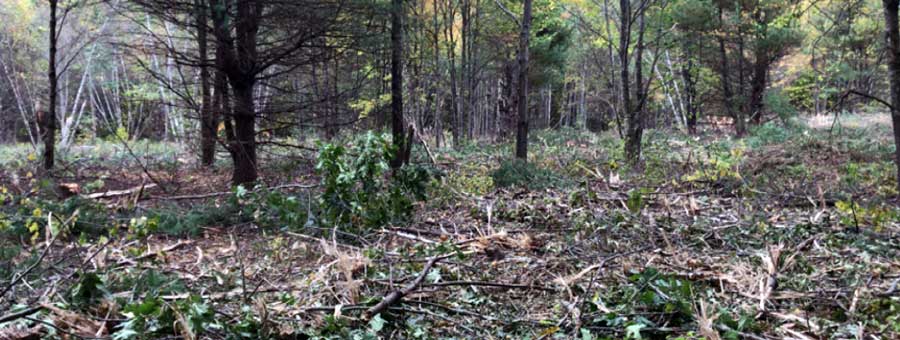Written by David Johnson
Somewhere on a SELT land, a brontosaurus moves through the property.
Treetops are mulched and fallen limbs and stumps are ground down. In its trail lies a wake of transformed landscape, as land about to transition out of thick young forest is turned back into a shrubby thicket.
Said brontosaurus is not of the Mesozoic variety; it is an impressive bit of heavy equipment, deployed for expansive land management projects. This is one of them, as SELT’s Stewardship team works to return a portion of the property to early successional habitat.
As defined by the US Department of Agriculture: early successional habitat is habitat with vigorously growing grasses, forbs (herbaceous flowering plants), shrubs, and trees which provide excellent food and cover for wildlife but need disturbance to be maintained. Examples of such habitats include weedy areas, grasslands, old fields or pastures, shrub thickets, and young forest.
For this recent project, the SELT team worked with wildlife biologists and the USDA Natural Resources Conservation Service to create early successional habitat, which benefits a variety of common wildlife such as small mammals, birds, and snakes.
An important consideration for this work is it is also close to known populations of the New England cottontail, the only rabbit native to this area and an endangered species in New Hampshire that needs early successional habitat to survive.
The newly created thicket provides a unique wildlife habitat.
Once common, the population has shrunk, with approximately 13,000 New England cottontails left and within a much smaller range, which includes southern New Hampshire. In recent years, a broad coalition of partners throughout NH, ME, CT, NY, MA, and RI have worked together with the goal of increasing the suitable habitat for the cottontail and increasing their population in order to keep the species off of the federal Endangered Species list.
New England cottontails are most threatened by a loss of habitat, resulting from increased development as well as the maturation of thousands of acres of forests that no longer contain the dense thickets the cottontail needs to stay out of grasp from predators.
As this property is conserved forever and owned by SELT, it offers a reliable landowner and location to create and maintain rabbit habitat on the landscape and help the New England cottontail continue to remain in the area.
And that’s what the management efforts with the brontosaurus are all about: creating that habitat that the cottontail would be eager to call home, turning sections of those old woods into a thicket and, eventually, a young, healthy forest to support our region’s wildlife as well as a rabbit that needs a little help.

Infographic courtesy of New England Cottontail

